Home coffee corner utensils selection guide, how to select household coffee utensils
Hand pot as an important tool for brewing coffee, like a swordsman's sword, choosing a pot is like choosing a sword. The coffee pot can appropriately reduce the difficulty of water control when we brew.
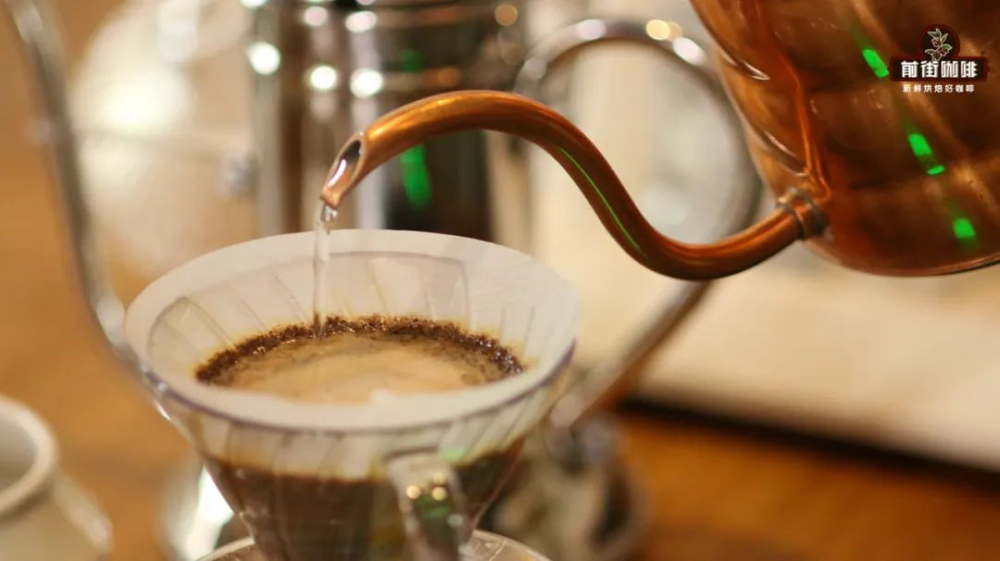
Therefore, it is very important to choose a hand coffee maker that suits you, especially for beginners, it is easier to brew the coffee you like. So today, Qianjie will share how to choose a hand coffee maker. The first step for temperature-controlled or non-temperature-controlled players to flush the pot is to choose between temperature-controlled or non-temperature-controlled. The non-temperature-controlled version of the hand-punching pot, that is, the conventional pot without a temperature control module, will be more affordable in terms of price. It is the basic version of many appliance manufacturers and is suitable for friends who have additional water-boiling equipment, but they need to buy another thermometer to cooperate with it.
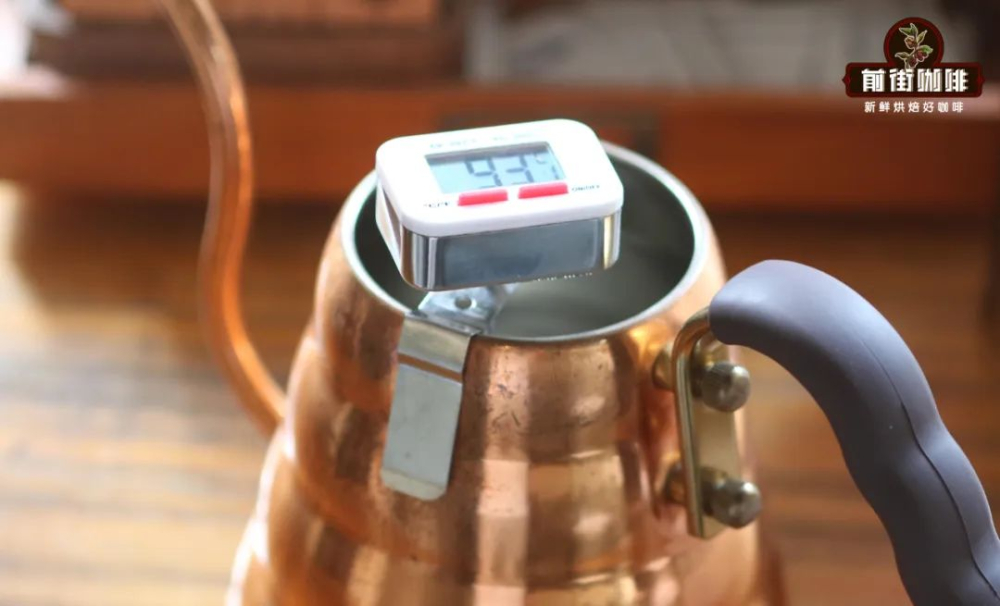
The temperature-controlled version of the hand-punching pot has relatively outstanding benefits-"convenient": it has its own heating function and can adjust the target water temperature at will. And heat preservation function, so that the water temperature in the cooking interval can also maintain the existing temperature. But there is also a flaw: due to the addition of the temperature control module at the bottom, it will be heavier than the non-temperature-controlled version, the center of gravity is concentrated at the bottom of the pot, and the price will be about 300 yuan higher than the conventional version.
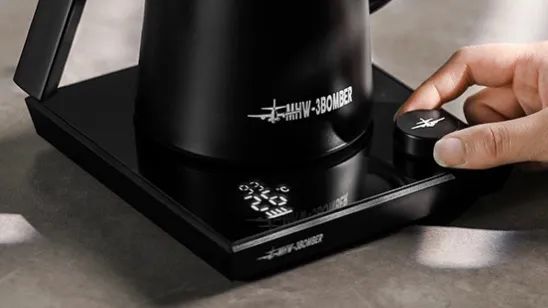
To put it simply, if you usually do not make much, or if you want to buy a more affordable brewing pot, choose a non-temperature-controlled version; if the purpose is for convenience, and usually flush more times, then the temperature-controlled pot must be a good choice. The spout is an important part of the shape of the water column. The common spouts on the market are thin mouth goose neck, wide mouth goose neck, or eagle beak, crane beak, flat beak. The difference between these spouts will directly lead to changes in the size and impact of the water column, but also have a great impact on the ease of use and operating space.

Friends who are just beginning to come into contact with hand flushing can start with the fine pot. Although the water column from the thin-mouth kettle looks thin, it is full of impact, easy to use, and the flow is easier to control. But it also has some disadvantages: it is unable to use large water flow, which reduces the playability to some extent.
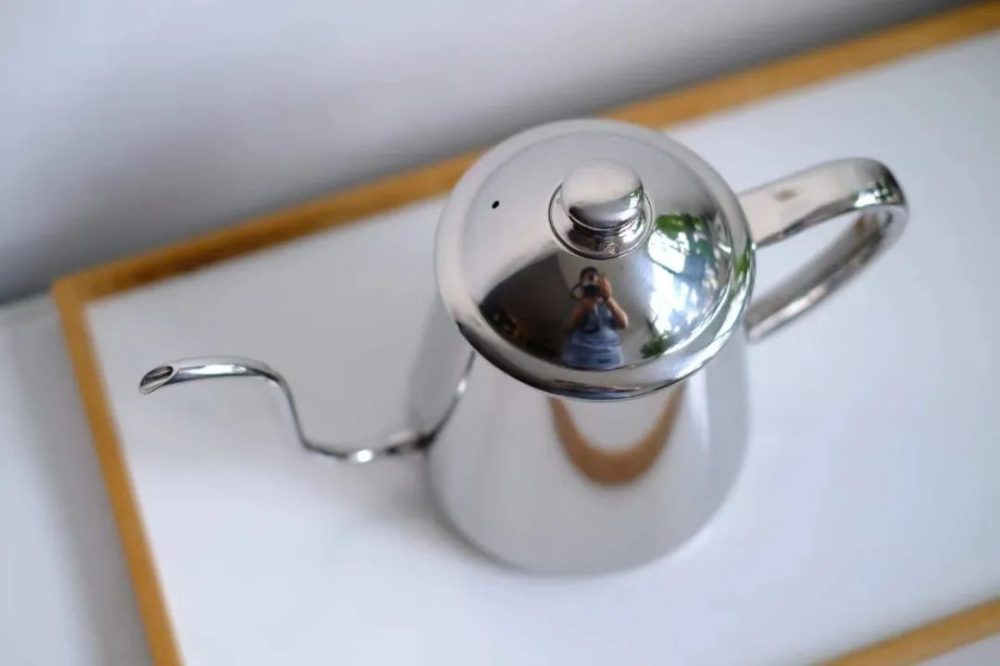
The wide-mouth pot is much more difficult to control water than the thin-mouth pot, and it takes a lot of practice to control the flow. But it has more playability, after proficiency can control the size of the water flow at will, play with a variety of cooking methods, and even meet tricky cooking techniques such as "drip method". It is more suitable for advanced players who leave the novice village.
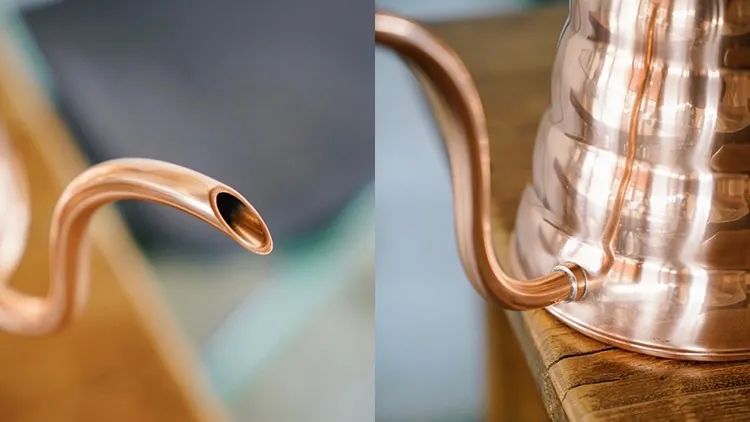
The spout of the crane-billed kettle is a specially designed wide mouth, which looks like the head of a crane from the side, hence the name. Don't be afraid that the water flow is too big to control because it is a wide-mouth design. The designer has set up a porous water barrier at its outlet to prevent the water from overflowing and can control the water freely without too much proficiency! Because of this design, it is loved by many people, which ensures playability and is not difficult to control water.
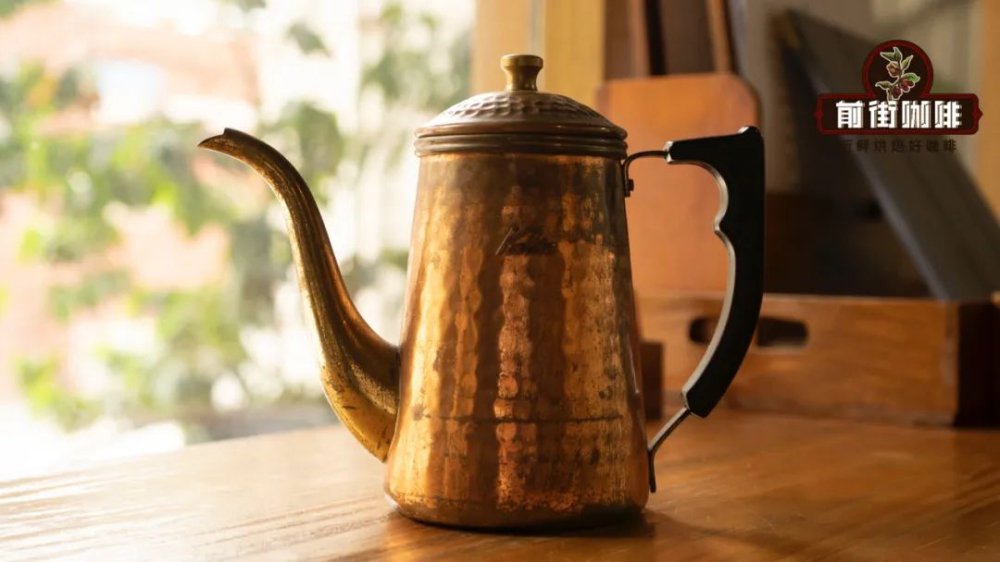
The olecranon pot refers to the downward outline of the diversion design spout, which must have the advantage of making the flushing water easier to form a vertical water column.
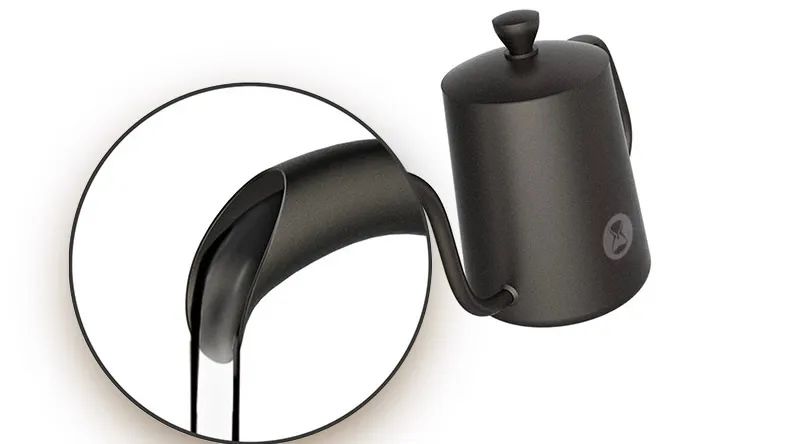
The second is the flat-nosed kettle, the opening of these pots tends to be parallel to the horizontal plane, without the diversion design of the spout, the flow of water is more likely to form a parabola, and it takes more practice to use it freely.
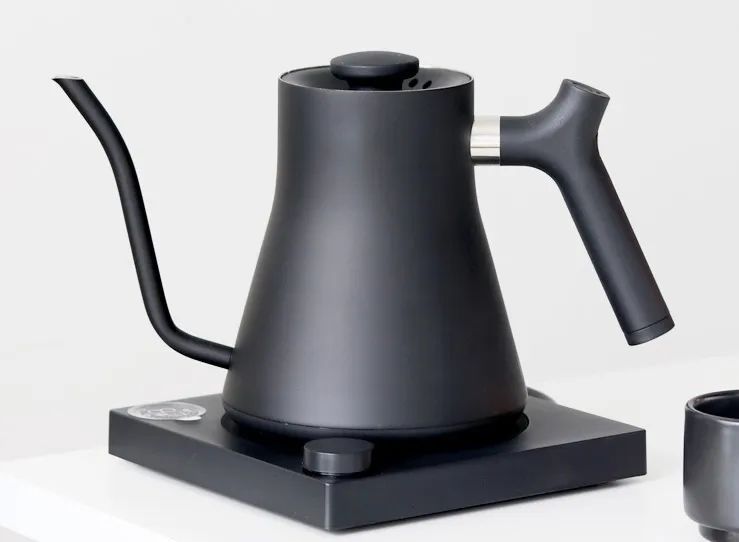
The body of the pot can be measured according to the strength of everyone or the size of the cup, the conventional capacity is mostly between 0.5L and 1.2L, what you have to choose is about more 200ml than the amount of water you need to brew, leaving plenty of room for fault tolerance. This is because, in the case of insufficient water, it is impossible to form a vertical and impacting water column, resulting in coffee powder not being fully stirred, resulting in inadequate extraction.
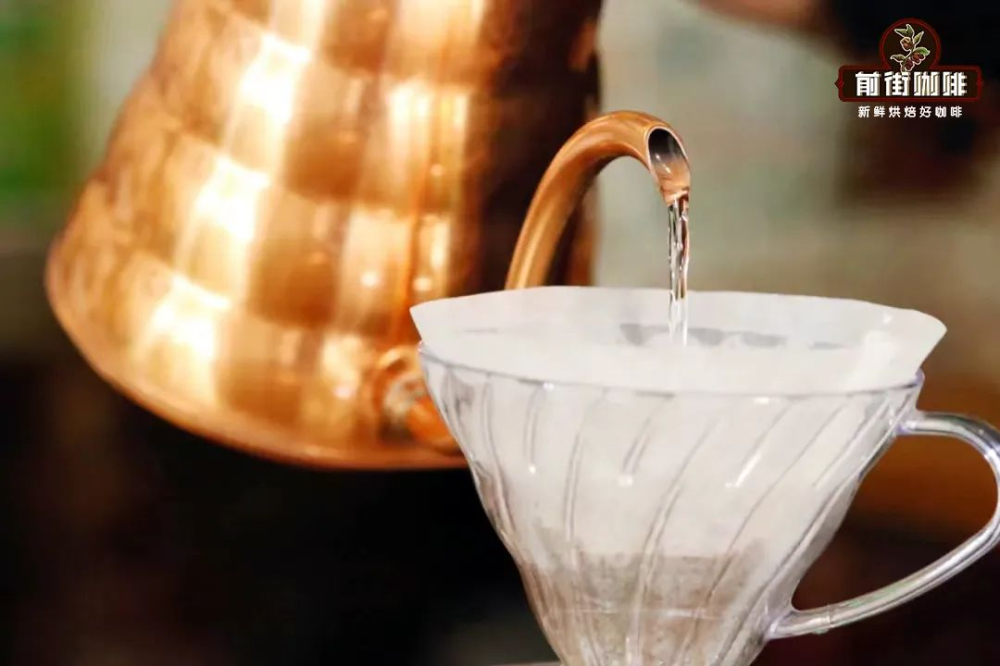
Each family's different grip is also their own unique logo, and almost every grip promotion will carry the phrase "in line with ergonomic design".
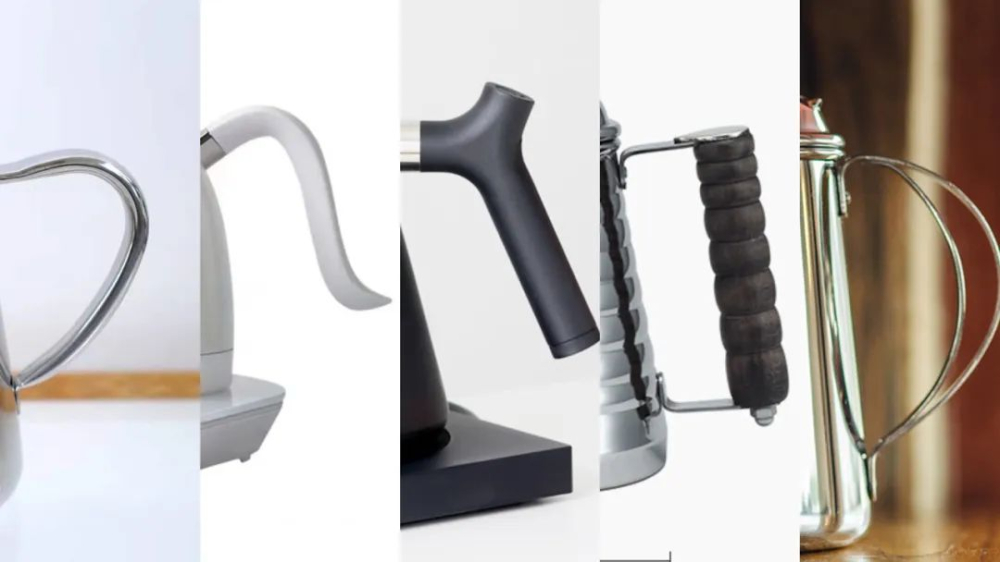
Indeed, different grips will bring us a different feel, good grip design, can make you more comfortable to hold, better control the center of gravity of the kettle body, control the flow of water. To put it simply, it is easy to control and save effort. The most common hand punch materials on the market are: stainless steel, copper, enamel porcelain. In terms of performance-to-price ratio, stainless steel is the first choice, which is also the most commonly used material on the market. When it comes to performance, it is copper pots, heat preservation and quality are excellent, but the price will be slightly higher (non-temperature-controlled version of the comparison). From the appearance, you can consider enamel porcelain, the whole body is full of artistic color, the disadvantage is fragile.
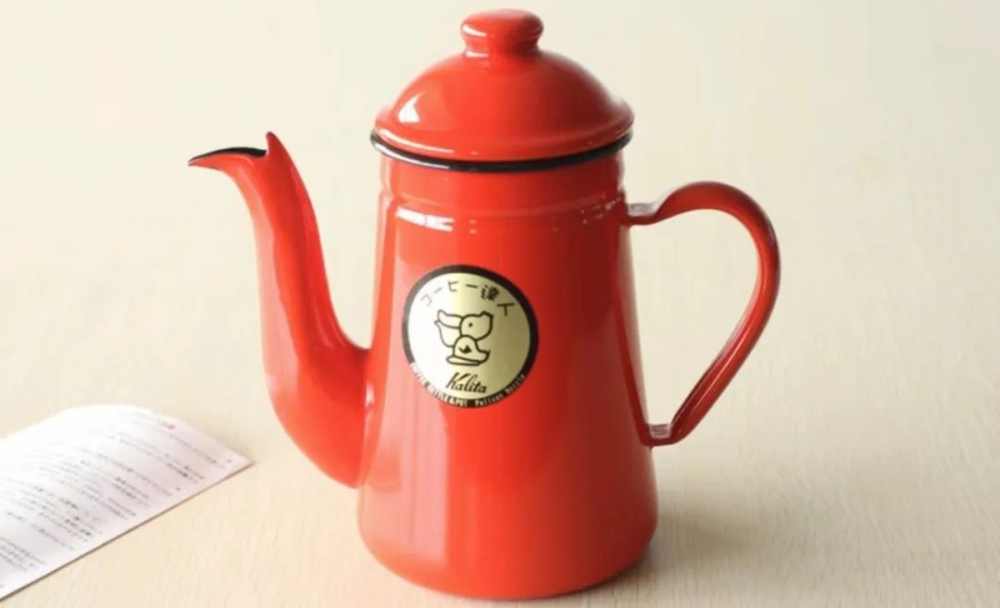
Generally speaking, a handy hand punch pot is very necessary for beginners. Do not buy a hand punch pot that is difficult to use because of your high appearance. Ha-END-
Front Street Cafe
No. 10 Baoqian street, Yandun road, Dongshankou, Yuexiu district, Guangzhou, Guangdong province

Important Notice :
前街咖啡 FrontStreet Coffee has moved to new addredd:
FrontStreet Coffee Address: 315,Donghua East Road,GuangZhou
Tel:020 38364473
- Prev

Two cups of coffee 60 euros! Reason: Can see luxury yacht!!
▲ Click to follow| Daily Boutique Coffee Culture Magazine Coffee Workshop This summer, Italy's restaurant industry has seen a number of incidents involving bills, all of which have sparked heated discussions on social media. CNN reported that two tourists ordered two cups of coffee and two glasses of water at Cervo restaurant in Sardinia.
- Next

How many beans are there in 15 grams and 20 grams of coffee beans? How to count beans for a cup of coffee without weighing
When brewing coffee by hand, if you don't weigh it around, how can you roughly determine the amount of 15g coffee beans? Today, Qianjie Coffee will share with you a more alternative way to count beans. I don't know if you have ever wondered how many coffee beans are the 15 grams of beans that are usually used for cooking. No.
Related
- Being chased out of the rain in front of Starbucks?! Store: Sheltering from rain under umbrellas poses a safety hazard
- The white moonlight has changed?! Lucky launches "Big Winter Pear American"
- Hand-brewed coffee three-stage method, high-sweet and universal brewing method to share! What does the high sweet water level of hand-brewed coffee mean?
- What is the difference between raw, refined and full espresso coffee? How to extract espresso and taste good?
- A complete list of coffee bean names and their meanings! What is Yejia Shefi coffee? Where is Mantelin coffee?
- What grade does Arida Manor Kaduai coffee beans belong to? What treatment is Arida ASD slow anaerobic sun exposure?
- The milk tea cup becomes smaller?! Overlord Tea Girl launches a new "Return to Yunnan" series
- Accused of selling counterfeit and high-priced coffee beans! Well-known boutique coffee brand "Oukelao" bowed and apologized!
- How to make espresso dumplings? Can I eat coffee and glutinous rice balls together?
- Save the unformed and stagnant powder cakes in one second! What is the problem with stagnant water in the powder bowl of the espresso machine?

